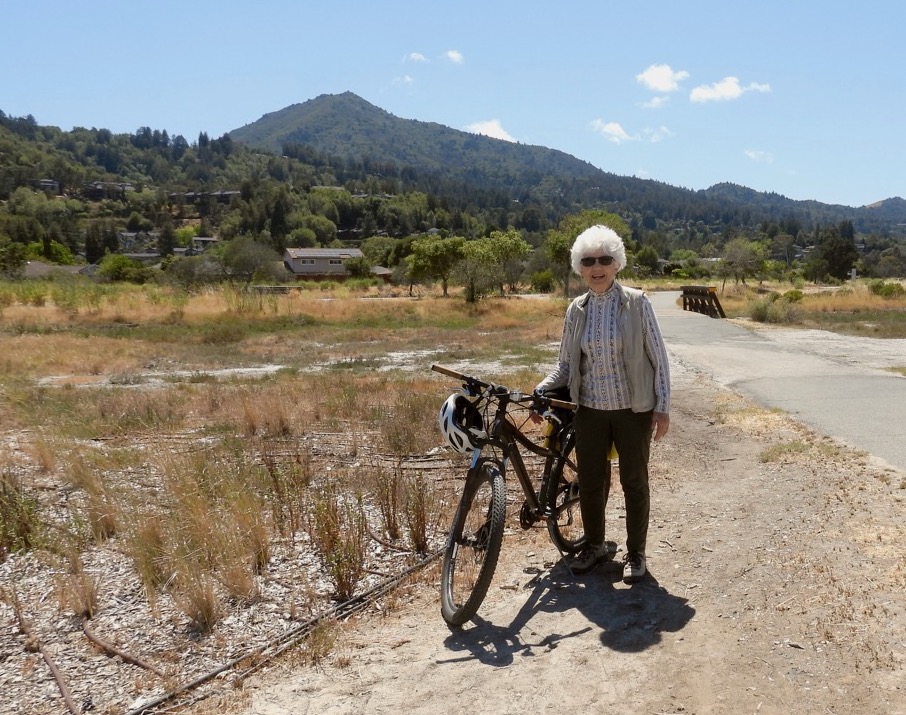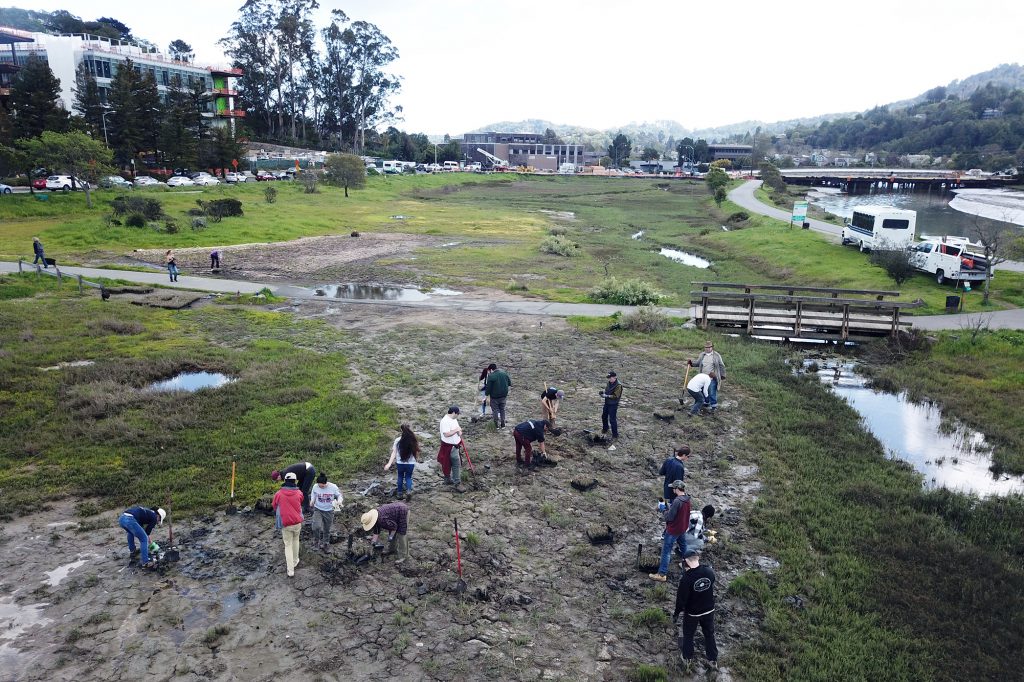
For decades, patches of Creekside Marsh at Hal Brown Park in Corte Madera lay barren. “There wasn’t a single thing growing,” says Sandy Guldman, 80, a recently retired environmental consultant who is also president of the nonprofit group Friends of Corte Madera Creek Watershed. “The soil was all old fill.”
Many of the bare patches are now covered with planted and volunteer pickleweed, saltgrass, marsh baccharis, and more. The remainder is at least partially vegetated, thanks to a recently completed restoration project that was — largely singlehandedly — managed and maintained by Guldman.
“[This is an example] of the difference that one person can make,” says Darcie Luce of the San Francisco Estuary Partnership, describing Guldman’s efforts, which included writing the project environmental impact documents, securing grant funding, obtaining permits, monitoring, coordinating volunteers, and hopping into her car to pick up donations of pickleweed or saltgrass from the Watershed Nursery in Richmond whenever they announced that they had extra. In addition to the nursery, Guldman also credits the support of Marin County Parks, which provided $800,000 as well as equipment; the Ross Valley Sanitary District; and a handful of volunteers who regularly come out to weed.

Beyond improving the soils and planting native tidal marsh species in barren areas, the primary goal of the project was to improve the tidal prism of the park’s wetland areas. The project increased the amount of tidal flow to the marsh by replacing a single failing culvert with three new ones in 2016. Today the marsh is lush, with a broad channel surrounded by mounds of greenery, and spotted here and there with orange snarls of dodder. Snowy egrets regularly stalk through, unfazed by a steady stream of nearby traffic of bicycles and pedestrians.
The project itself was not without hitches. The initial plan was to lower the marsh in order to rapidly achieve greater tidal prism, and thereby improve flood capacity. However, this was soon modified upon learning that a recent survey of marshes around the Bay had deemed Creekside Marsh one of the most likely to resist drowning due to sea-level rise. The plan was revised to replace instead of remove the barren fill soil, but that too was thwarted in part — there wasn’t enough quality mud available.

“No one wanted to give us such a small amount [of mud],” says Guldman. “It just wasn’t worth their time.” In the end, only enough mud was available to replace some of the old fill, and the remainder was simply amended with compost and gypsum. That is the area that is still struggling — more so since the water supply to the park sprang a leak and was shut down earlier this spring. Guldman hopes that it will be repaired and turned on soon, as many of the plantings are crisping in the sun.
“I have bird-dogged this,” Guldman says. “One person really can make an impact. Find something that you like to do and just do it. I don’t expect people to even notice, really. But I feel gratification at seeing a project like this get done, and that is reward enough.”